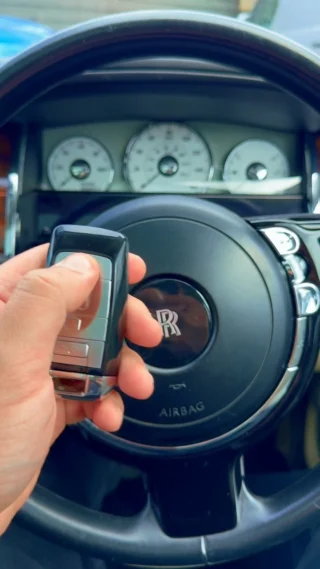Comprehensive Guide to Car Door Lock Repair: Troubleshooting and Solutions
The integrity and performance of a vehicle's door locks are necessary for both the security of the car and the safety of its occupants. Car door locks can experience a variety of issues, ranging from small mechanical glitches to finish failures. This post seeks to provide a helpful summary of car door lock repair, detailing typical issues, diagnostic treatments, and solutions.
Comprehending Car Door Locks
Before diving into repair procedures, it is vital to comprehend the components of a common car door lock. There are 2 main types of locks: mechanical and electronic.
Parts of a Car Door Lock System
- Lock Cylinder: The part where the key is placed.
- Latches: Mechanisms that hold the door shut.
- Actuator: Electric motor in electronic locks that helps in locking and opening.
- Linkage: Connects the lock cylinder to the latch.
- Remote Key Fob: In electronic systems, this is utilized to lock and unlock the doors from a distance.
Common Issues with Car Door Locks
Car door locks can stop working for a multitude of reasons. Here are some typical problems experienced by vehicle owners:
- Sticking or Frozen Locks: Especially in cold weather condition, locks can end up being hard to run.
- Lock Not Engaging or Disengaging: Both mechanical and electronic locks can face problems where they do not react to the key or remote.
- Key Jams: The key may get stuck in the lock, making it impossible to lock or unlock the door.
- Remote Malfunction: In electronic systems, the key fob may not work due to battery concerns or programming issues.
- Physical Damage: Vandalism or accidents can damage the lock mechanism.
Repairing Car Door Lock Issues
When a car door lock is not functioning correctly, it is essential to identify the issue accurately before continuing with a repair. Below are steps that can assist repair the issue:
Step-by-Step Troubleshooting
Visual Inspection:
- Check the door lock and surrounding elements for noticeable damage.
- Examine the key for wear and tear.
Evaluate the Key:
- If the lock is sticking or not engaging, attempt using an extra key if readily available.
- Ensure the key is clean from dirt and particles.
Inspect the Actuator:
- Listen for any sounds when pushing the key fob. A clicking noise might indicate a malfunctioning actuator.
Check Door Wiring:
- Check the electrical wiring that links the door lock to the vehicle's electrical system.
- Search for detached or frayed wires.
Temperature Influence:
- If the lock is sticking in winter, apply lithium grease to assist oil the mechanism.
Fixing Common Door Lock Issues
When the issue has been diagnosed, the repair can begin. Here are some common repair strategies for numerous issues:
Fixing a Sticking or Frozen Lock
- Cleaning up: Use a graphite lubricant or silicone spray to clean and oil the system.
- Heating: If frozen, utilize a hairdryer to warm the area around the locking system thoroughly, preventing overheating.
Fixing a Lock Not Engaging/Disengaging
Lock Cylinder Replacement:
- If the lock cylinder is worn, think about changing it. This frequently includes prying off the door panel to access the lock mechanism.
Actuator Replacement:
- For electronic locks, if the actuator is faulty, it will require replacement. Make sure to disconnect the battery before trying this repair.
Fixing a Jammed Key
- Extraction Tool: If a key is stuck, use a set of needle-nose pliers to carefully pull it out, or a key extractor.
- Lock Lubrication: Apply a little quantity of lube to ease the process.
Remote Key Fob Malfunction
- Battery Replacement: Most remotes have exchangeable batteries. Follow the producer's directions to change the battery.
- Reprogramming: Sometimes, the remote needs to be reprogrammed. Refer to the vehicle's manual for actions to reprogram the key fob.
Physical Damage Repairs
- Door Lock Assembly Replacement: If the lock is physically harmed, complete replacement of the lock assembly might be needed.
- Professional Help: If uncertain about DIY repairs, look for support from a licensed mechanic.
Upkeep Tips for Car Door Locks
To prolong the life of car door locks, routine upkeep is essential. The following practices can assist keep ideal performance:

- Regular Lubrication: Apply suitable lubricant to the locks every few months.
- Keep Keys Clean: Regularly clean the car keys to prevent dirt accumulation.
- Prevent Excessive Force: Do not use extreme force when locking or unlocking; this can trigger damage in time.
- Enjoy for Signs of Wear: Be mindful to any modifications in the lock's efficiency and address concerns quickly.
FAQs about Car Door Lock Repair
Q: How can I tell if my door lock is broken?A: Common
signs include the lock not engaging or disengaging, a jammed key, sounds from the door when utilizing the key fob, or visible damage to the lock assembly.
Q: Can I repair a car door lock myself?A: Yes, many simple problems can be attended to by following the repairing actions in this article, but complicated issues may require expert assistance. Q: What kind of lube should I utilize
for my locks?A: It is best to utilize graphite powder or silicone-based lubricants since oil can draw in dirt and gunk. Q: How much does it normally cost to change a car door lock?A: The cost can differ widely
based on the vehicle's make and model, but normal replacement expenses
can vary from ₤ 100 to ₤ 300, consisting of labor. Car door lock repair can appear challenging, but understanding the elements and common issues can make the process far more manageable. Whether tackling little repairs yourself or seeking expert assistance for more significant concerns, keeping the door locks functioning properly is essential for vehicle security and safety. Routine maintenance and timely attention to problems can significantly extend the life of your car's locking system.

